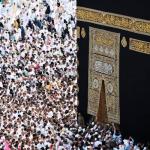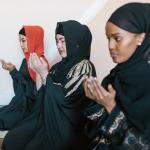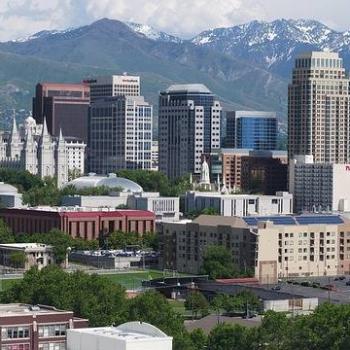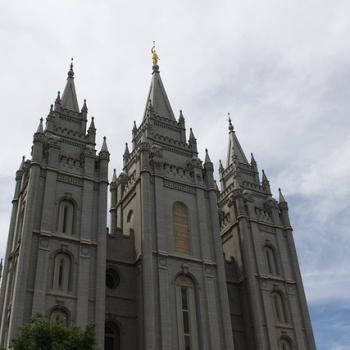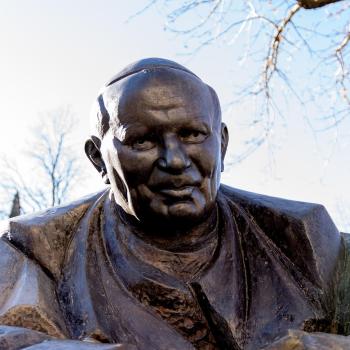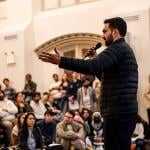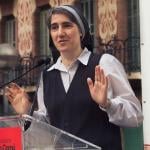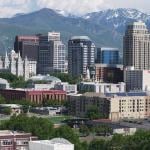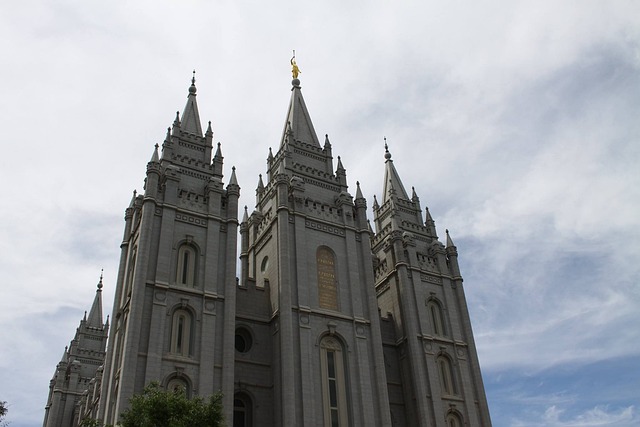
THE RELIGION GUY’S ANSWER:
The answer is that a complicated process occurred during decades before and after June 1, 1978, a truly historic day for The Church of Jesus Christ of Latter-day Saints (LDS, formerly nicknamed “Mormon”) when ranking authorities met in the upper room at the Temple in Salt Lake City, Utah, for prayer and deliberation.
The group agreed that day that God desired the church to open its “priesthood and temple blessings to all worthy male members,” as the official announcement stated. This made those with Black African ancestry full and equal participants in church life for the first time in 126 years. The change by revelation was so important that it is part of the LDS Scriptures, alongside the church president’s 1890 announcement that suspended founder Joseph’s Smith’s polygamy teaching.
The controversial racial restrictions had been imposed by all presidents and their top associates starting with Utah’s founder Brigham Young, and applied them to those with even minor degrees of Black blood. Many Americans, both secular and religious, harbored racial views that were later seen as abhorrent, but the LDS religion was unique in proclaiming thoroughgoing racial discrimination by the church to be the will of God.
Understand that the LDS system has no trained clergy so holders of the lay priesthood, a status normally granted all males in their youth, fill all offices and functions from international leadership down to local congregations. (There are no females in the priesthood, a topic for another day.)
Barred from even routine posts
Consequently, Blacks were unable to give sermons at worship, distribute the Communion bread and water, teach Sunday School, confer special blessings, undertake the church’s well-known missionary assignments, or fill even routine posts in congregations. The priesthood ban then meant they could not have weddings in temples or experience endowment and other especially sacred rites there. They were even excluded from the highest exaltation in the LDS concept of the afterlife.
This unusual history becomes timely with the release of a remarkably revealing new book, “Second-Class Saints: Black Mormons and the Struggle for Racial Equality” (Oxford University Press) by Colorado State University historian Matthew L. Harris. He worked on it nearly 15 years and says he acquired “unprecedented access” to personal papers and meeting minutes of the 15 “Brethren” who exercise absolute power over the religion. That would be the president, also called the prophet, who forms the First Presidency with two chosen counselors, and then the members of the Quorum of the Twelve Apostles
Equally significant is a 2023 book, “Let’s Talk About Race and Priesthood,” a candid accounting from University of Utah historian W. Paul Reeve, who is a faithful LDS member. This counts as a religious breakthrough because the book is published by the church’s own Deseret Book company and therefore represents a healthy reckoning with racial history and theology as the Utah-based religion expands globally among varied racial and ethnic groups.
A useful starting point in Harris’s narrative is The First Presidency’s formal teaching issued in 1949. The trio affirmed that the ban was a “direct commandment from the Lord” and that the church had “always” upheld it (an assertion later disproved). Why? It said Young taught that because biblical Cain murdered his brother Abel, a curse was laid upon his descendants, a belief reinforced by interpretations of the biblical characters found in LDS Scripture and theology. Young thought the “curse will be removed from the seed of Cain” someday when “all the rest of the children have received their blessings in the holy priesthood.”
Crucial life before birth
The Presidency cited a second LDS doctrine, that before coming to life on earth, each human has an unremembered spirit existence with the heavenly Father and Mother. The Presidency said “the conduct of spirits in the premortal existence has some determining effect” on their earthly “conditions and circumstances.” The clear implication was that in their premortal existence Blacks had failed God in some manner, though the Presidency said the particulars “have not been made known.”
Nonetheless, other authorities sought to end the ban, in line with the teaching in LDS Scripture that “all are alike unto God.” Eventually, the leadership preached neither of those theological explanations and said the Saints simply did not know why God instituted the ban.
Ongoing private disagreements among the Brethren intensified with outside pressures during the 1960s civil rights movement. Schools began boycotting athletic games with church-run Brigham Young University. The school feared loss of tax exemption when the Internal Revenue Service in 1970 denied tax exemption to Bob Jones University over its ban on interracial dating. (The U.S. Supreme Court affirmed that IRS action in 1983). Would the federal government dare to even deny the church’s tax-free status, remembering its severe persecution of the church until it ended polygamy?
In 1973, pivotal research by physician and amateur historian Lester Bush proved beyond doubt that Smith ordained Blacks to the priesthood in the church’s founding years, setting precedent to restore their status. (Smith became an abolitionist before his assassination in 1844, whereas Young, his successor as prophet and president, considered slavery a “divine institution.”)
A new prophet’s impact
A second major event in 1973 was the automatic ascent of former businessman Spencer W. Kimball to the LDS presidency due to his seniority as the longest-serving apostle. Against persistent opposition, the new prophet began quietly praying and maneuvering to unite all 15 Brethren behind abolishing the ban. Kimball especially worried that it hindered LDS evangelism. A key step was his 1975 decision to build a temple in Brazil, where mixing of the races made consistent application of the ban next to impossible.
The 1978 revelation gave Blacks priesthood and temple access but left the doctrinal aspects unexplained and unresolved. A significant reform came in 2010 when the Brethren decided Deseret Book should quietly stop selling the late Bruce McConkie’s “Mormon Doctrine” after 44 years. This popular and influential work codified all the old racial beliefs even though McConkie as an apostle had supported removal of Black ban.
Decades of struggle culminated in the final official demise of racial theology in 2013 when the Brethren issued the 2,000-word policy statement “Race and the Priesthood” with this clarification: “Today, the Church disavows the theories advanced in the past that black skin is a sign of divine disfavor or curse, or that it reflects unrighteous actions in a premortal life; that mixed-race marriages are a sin; or that blacks or people of any other race or ethnicity are inferior in any way to anyone else.”
Reeve’s church-sanctioned book is particularly noteworthy in addressing the status of the self-perpetuating and unelected group of 15 men whose rule receives an unusual degree of unquestioning deference from believers. Reeve recalls this dictum of Wilford Woodruff, the LDS president and prophet 1889-1898: “The Lord will never permit me or any other man who stands as President of this Church to lead you astray.”
Learning from imperfections
In the LDS religion, these men are chosen by God to restore the one true church of Jesus Christ in these latter days. Reeve professes that they are “called by God” as “special witnesses of Jesus Christ and have a divine mandate to point us to salvation.” But he adds that LDS Scripture promotes personal humility, which presents 21st Century Saints with “a call to learn from the imperfections of our leaders on matters of race and then move forward.”
Two notes:
Full understanding of this question involves past and present-day interpretation of passages in the LDS Scriptures that deal with race, skin color, curses and priesthood. That discussion was far too complex to treat adequately in this article, so those interested should consult the coverage in the Harris and Reeve books.
The Religion Guy interviewed President Kimball on this immediately after the 1978 revelation, and later President Gordon Hinckley, and surveyed matters in “Mormon America: The Power and the Promise,” coauthored with his late wife Joan.


